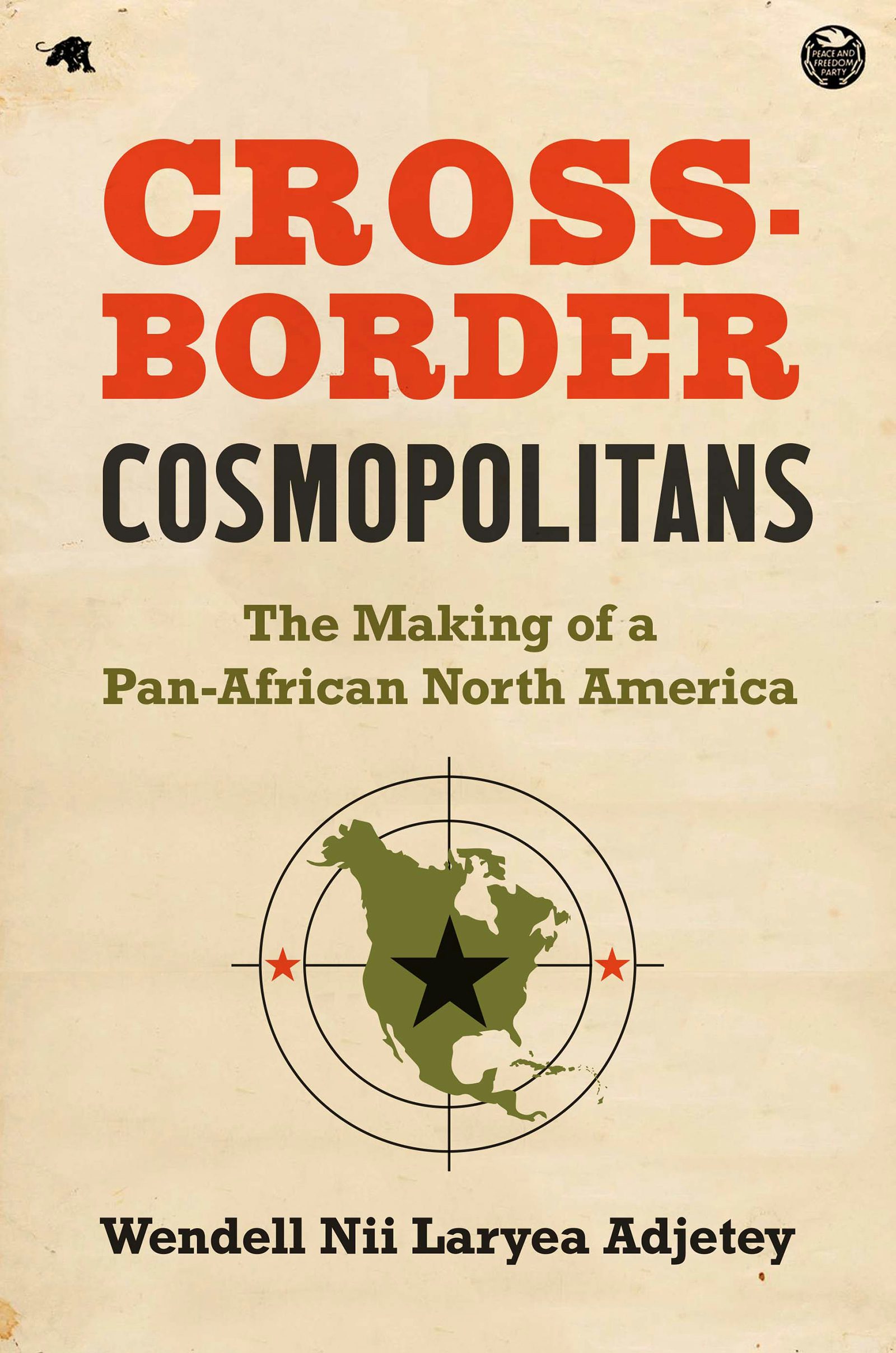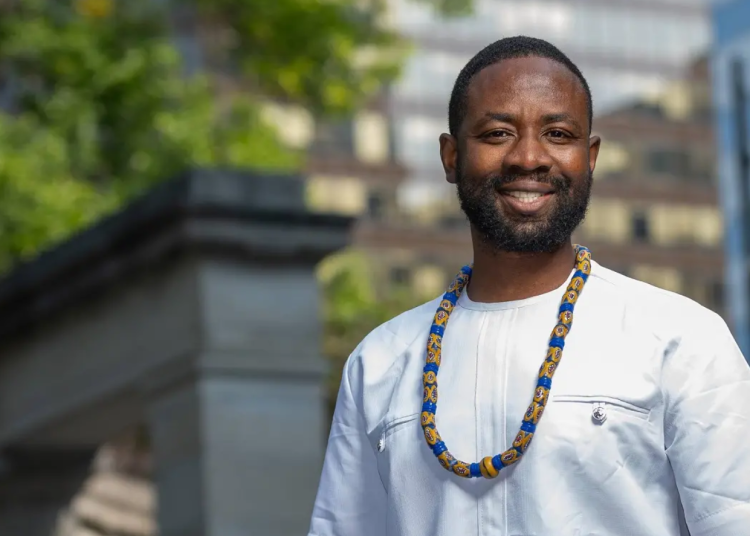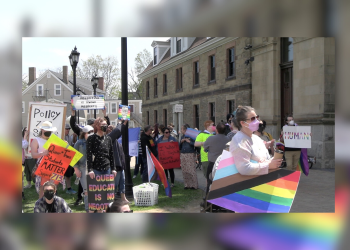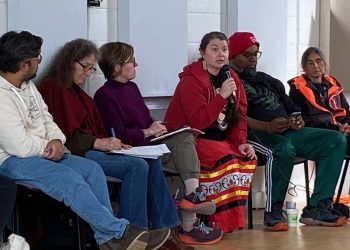How do “democratic” governments quash rebellions and revolutions? Wendell Nii Laryea Adjetey (Nii Laryea Osabu I, Atrékor Wé Oblahii kè Oblayée Mantsè) who studies counterinsurgency in North America finds secret complicity between governments.
Adjetey’s talk in Fredericton on Sept. 16 was titled “Counterinsurgency and Counter-revolution: Black Power in Postwar North America.”

Adjetey is the William Dawson Associate Professor of post-reconstruction U.S. and African Diaspora history at McGill University. He studies transnational black freedom struggles and is author of the book Cross-border Cosmopolitans (2023), winner of the Governor General’s Award for Scholarly History of the Canadian Historical Association, among other prizes.
Sun Tzu said: “all warfare is based on deception.” Longest serving Chief of Counterintelligence of the CIA (1954-1975), James Jesus Angleton stated “deception is a state of mind and the mind of the state.” Adjetey mused: “Presidents couldn’t tie their shoes without permission from shadowy figures like Angleton.”
According to Adjetey, Angleton was “the guardian of the secrets, the person who knew where the bodies were buried.” Under Angleton’s reign, counterinsurgency became the focus of the CIA.
Besides the work he did internationally, in the U.S., Angleton was after all “those deemed internal enemy combatants,” mostly African-Americans “agitating for rights.” Adjetey commented on the “non-violent ethos” of the Civil Rights movement while Black Power “believed the use of force was divine” and felt “that the pseudo integration [post-slavery] was meaningless without genuine material security of the Black masses.”
The FBI, from 1956-1971, ran a secret program surveilling, infiltrating and assassinating Black leaders. The program’s goals were to sow discontent, prevent the rise of a “Black Messiah,” prevent Black youth from joining militant organizations, among other goals.
Many leaders were killed, including Martin Luther King Jr., a pacifist, and Malcolm X, who did not advocate for violence but the “the righteousness of self-defense,” as established in the U.S. Constitution’s Second Amendment which guarantees “the right of the people to keep and bear arms.” As a member of a self-defense group, Little Bobby Hutton, 16 years old, was marked for death.
At its foundation, the Black Panther Party appended “For Self Defense” to its name. It was a paramilitary organization “that was operating for the benefit of Black people and Black communities.” The Black Panther’s popular representation as sexist and violent was “part of the counterrevolution.” Most of the foot soldiers were women because the men were marked for death by the counterinsurgency strategies.
In Canada, following the outcome of the Sir George Williams Affair in 1969, the national intelligence service decided it needed information as well to prevent other possible uprisings.
U.-S. FBI agent Warren Hart immigrated to Canada, as a plant in the Black power movement, in a move arguably organized by the two governments. Heart was active from 1971-1975, to surveil Black and the so-called nascent “Red Power” [Indigenous] and activism. Operation Checkmate was the name given to the surveillance operation.
Many young African-Canadian men —usually poor and marginalized from inner-city Toronto- were “on the national security lists” as a result. Hart was sent to “groom” these young men but incited them to petty crime, including providing firearms.
One 17-year-old, Ricky Atkinson, was condemned to four years in prison for robbing a bakery, because his aim was to send the proceeds of his robbery to the Black Panthers in the U.S., at Hart’s encouragement. Atkinson subsequently became Canada’s most notorious robber.
Hart also intentionally mentored Indigenous activists and was deemed a “provocateur” by Indigenous groups who were peacefully trying to organize.
Adjetey concluded by asking, at a time when, in Canada, we are trying to promote diversity and inclusion, how groups are supposed to fight against: “a particular power that is unseen (..) and directed at certain populations to ensure their neglect.”
Sophie M. Lavoie is a member of the NB Media Co-op’s editorial board.



![Poster exhibit remembers the two Japanese cities devastated by nuclear weapons [video]](https://nbmediacoop.org/wp-content/uploads/2025/10/image0-3-350x250.jpeg)




![‘Continuum of genocide’: Pentagon funding of Sisson mine provokes renewed opposition from Wolastoq Elders [video]](https://nbmediacoop.org/wp-content/uploads/2025/07/SissonMine-2-120x86.jpg)
